June 6
2020 June 6
Jochen Möhr’s moths from Metchosin this morning:
1 Adela septentrionella
1 Nadata gibbosa (still the same)
1 Protitame subalbaria
1 Tyria jacobaeae
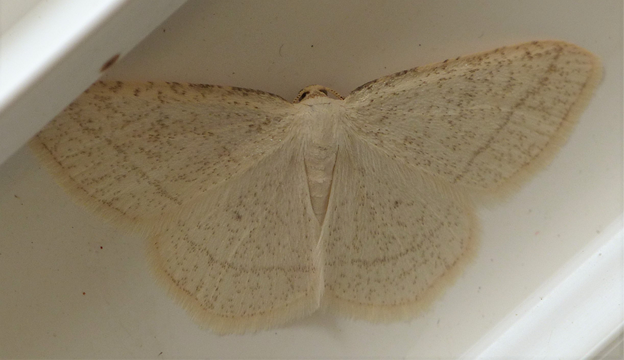
Protitame subalbaria (Lep.: Geometridae) Jochen Möhr
Jody Wells sends a miscellany from “airport-ish”!
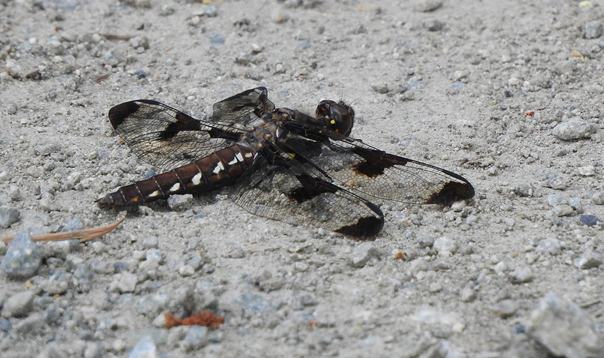
Common Whitetail Plathemis lydia (Odo.: Libellulidae) Jody Wells
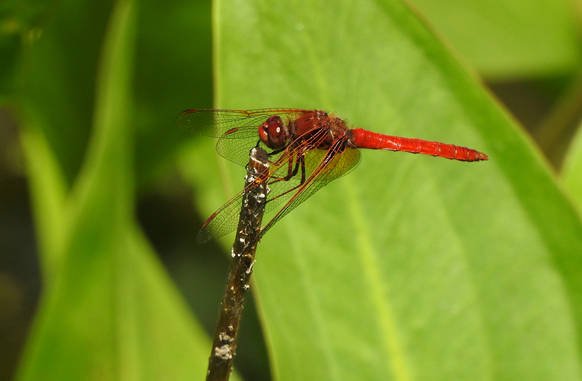
Cardinal Meadowhawk Sympetrum illotum (Odo.: Libellulidae) Jody Wells
Jeremy Tatum writes: I had to get Dr Rob Cannings to identify the next three more difficult ones!
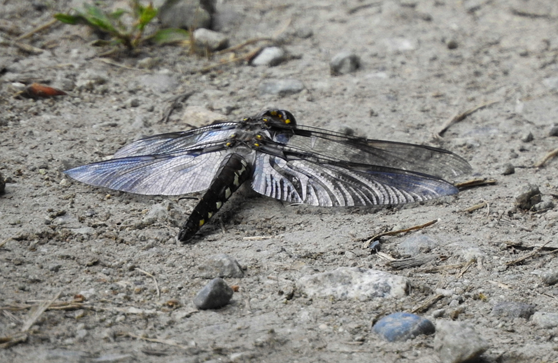
Common Whitetail Plathemis lydia (Odo.: Libellulidae) Jody Wells
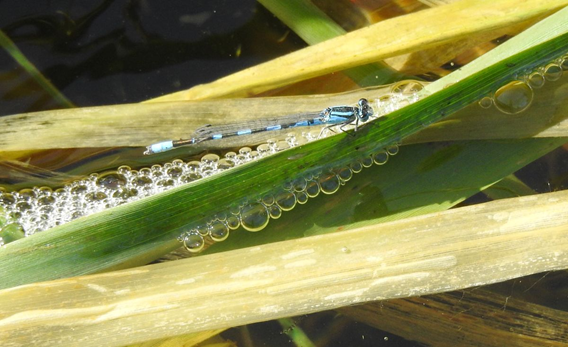
Tule Bluet Enallagma carunculatum (Odo.: Coenagrionidae) Jody Wells
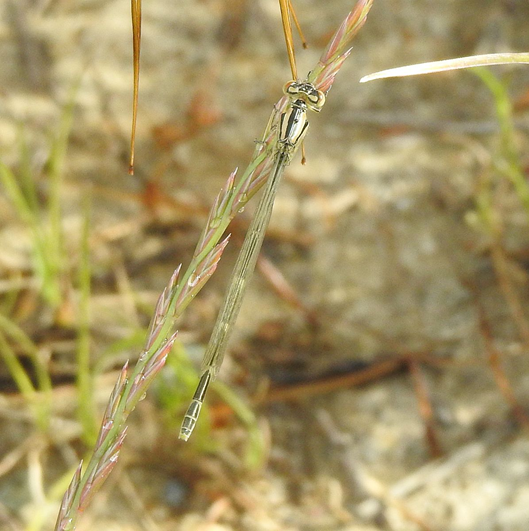
Young female Tule Bluet Enallagma carunculatum (Odo.: Coenagrionidae) Jody Wells
Scott Gilmore didn’t need to see much of the beetle below to identify it as Nicrophorus sp. Dr Heather Proctor, University of Alberta, writes: Wow, that is a massive load of mites! The beetle is a burying beetle of the genus Nicrophorus (Silphidae). On BugGuide there are two species illustrated from BC, N. defodians and N. investigator. Unfortunately, the mites cover up the characters needed to differentiate between them. The good news is that I can identify the mites to genus because of their host: they are deutonymphal Poecilochirus (Mesostigmata: Parasitidae). Despite the family name, they aren’t parasites, just phoretic hitchhikers (though in numbers this large they probably do cause the beetle some problems by interfering with locomotion). The mites are catching a ride to the next place where the beetle will bury a carcass, where they will dismount, eat nematodes and fly eggs/larvae, mature, mate and lay eggs. The next generation of mites departs on the young Nicrophorus once they have matured.
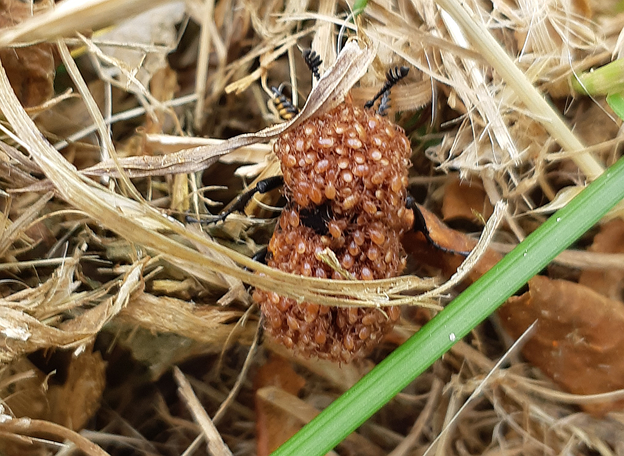
Sexton beetle Nicrophorus sp. (Col.: Silphidae)
with mites Poecilochirus (Mesostigmata: Parasitidae)
Jody Wells
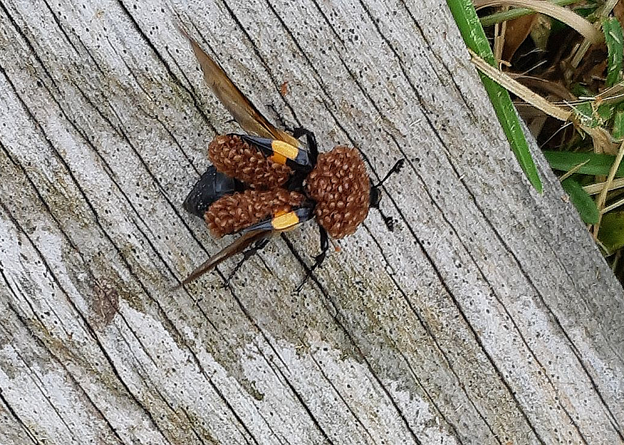
Sexton beetle Nicrophorus sp. (Col.: Silphidae)
with mites Poecilochirus (Mesostigmata: Parasitidae)
Jody Wells
Jody writes: I brought home cattails to replenish nesting materials around my window bird feeder….after I had installed … I noted the fluff was moving…but no breeze…. The immatures look very ominous…like something one does not want to have in one’s hair. Jeremy Tatum comments: Yes, I agree, I do not want these in my hair.
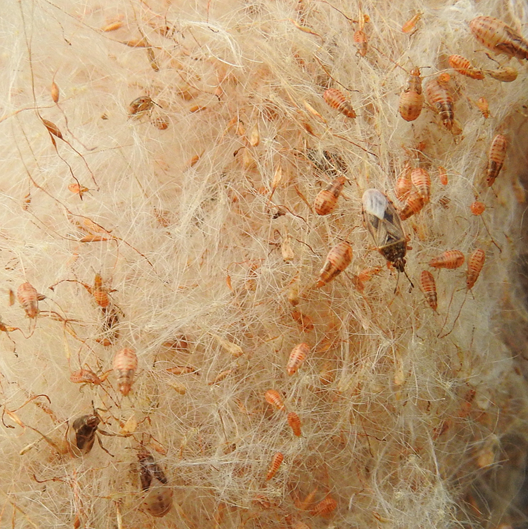
Cattail Bug with nymphs Chilacis typhae (Hem.: Lygaeidae) Jody Wells
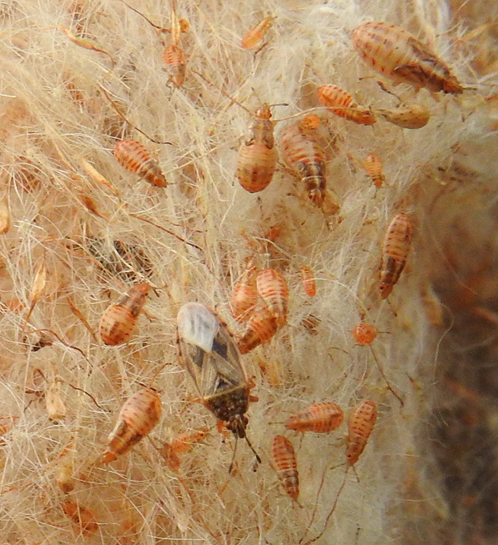
Cattail Bug with nymphs Chilacis typhae (Hem.: Lygaeidae) Jody Wells
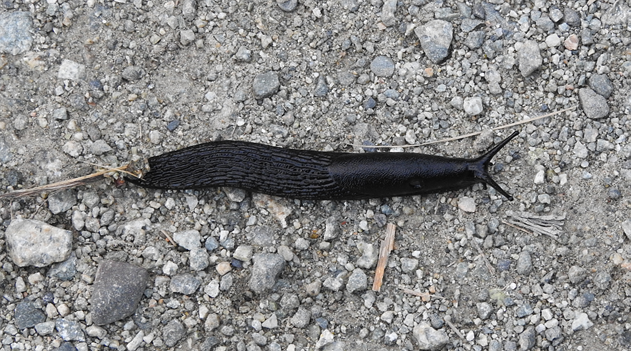
Arion rufus (Pul.: Arionidae) Jody Wells
Val George writes: Yesterday afternoon, June 5, there were several dozen dragonflies flying around at Gore Park. These included two Eight Spotted Skimmers Libellula forensis, at least a couple of Western Pondhawks Erythemis collocata, several meadowhawks, mostly Cardinal Meadowkhawks Sympetrum illotum and at least one Yellow-legged Meadowhawk Sympetrum vicinum, and several darner species that I couldn’t identify to the species level.
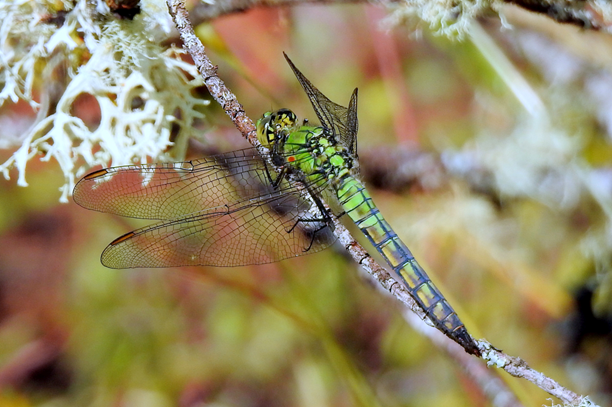
Western Pondhawk Erythemis collocata (Odo.: Libellulidae) Val George
Jeff Gaskin writes: Yesterday afternoon, June 5th, I checked Eddy’s Storage on Stelly’s Cross Road, and I found three Field Crescents. Today, June 6th, around 1 p.m. a Western Tiger Swallowtail flew past my Mom’s yard on Wascana Street. [And I still haven’t seen a swallowtail – Jeremy Tatum]
